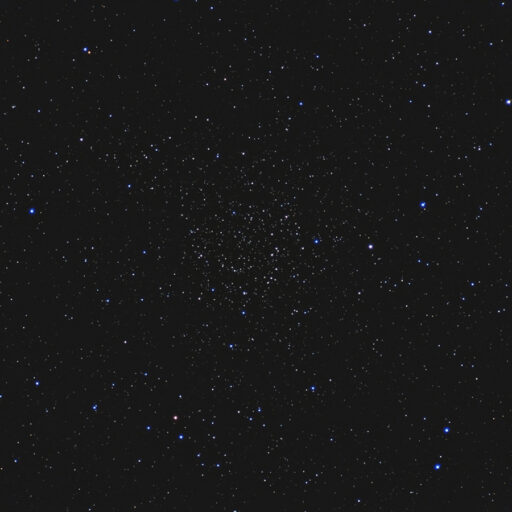
Telescope: Unitron 510 5” f/16 refractor, Atlas EQ-G
Camera: Canon EOS Ra full frame DSLR
Filter: 2” ZWO IR Cut Filter
Guide scope: Williams Optics 50mm Guidescope, ASI290MM, PHD
Exposure: 26x60sec, ISO 1600, saved as RAW
Darks: Internal (Long Exposure Noise Reduction)
Flats: 32×1/10s sky flats taken at dusk
Average Light Pollution: Bortle 8, poor transparency
Lensed Sky Quality Meter: 18.4 mag/arc-sec^2
Stacking: Mean with a 1-sigma clip
White Balance: Nebulosity Automatic
Software: Backyard EOS, Deepsky Stacker, Nebulosity, Photoshop
NGC7789 is a large and wonderfully rich open cluster located just west of Cassiopeia. It was discovered by Caroline Herschel in 1782 and is sometimes called Caroline’s Rose. It is a delicate object in small to moderate scopes, but blossoms into a rich field in large telescopes. When viewing this cluster I like to spend some time with the field. At first all I will see are the foreground stars and perhaps a soft glow in the background. As my eye adjusts, the first faint stars appear, and then it slowly blooms into a beautiful patch of stardust.
This is the last of 5 test images taken with my Unitron 510. Caroline’s Rose is currently low in the northeast at sunset and is high overhead after midnight. (Photo credit: John Graham, 7/14/2023)
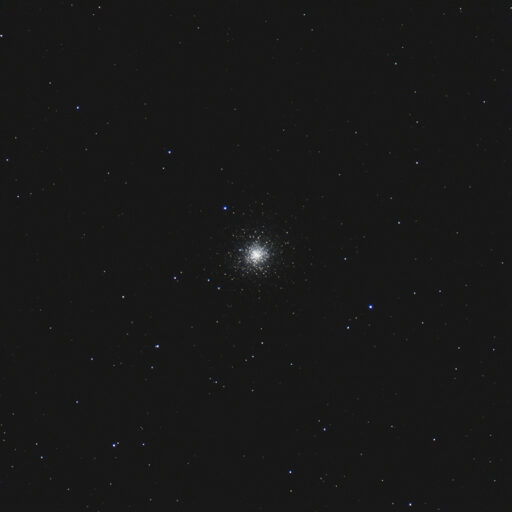
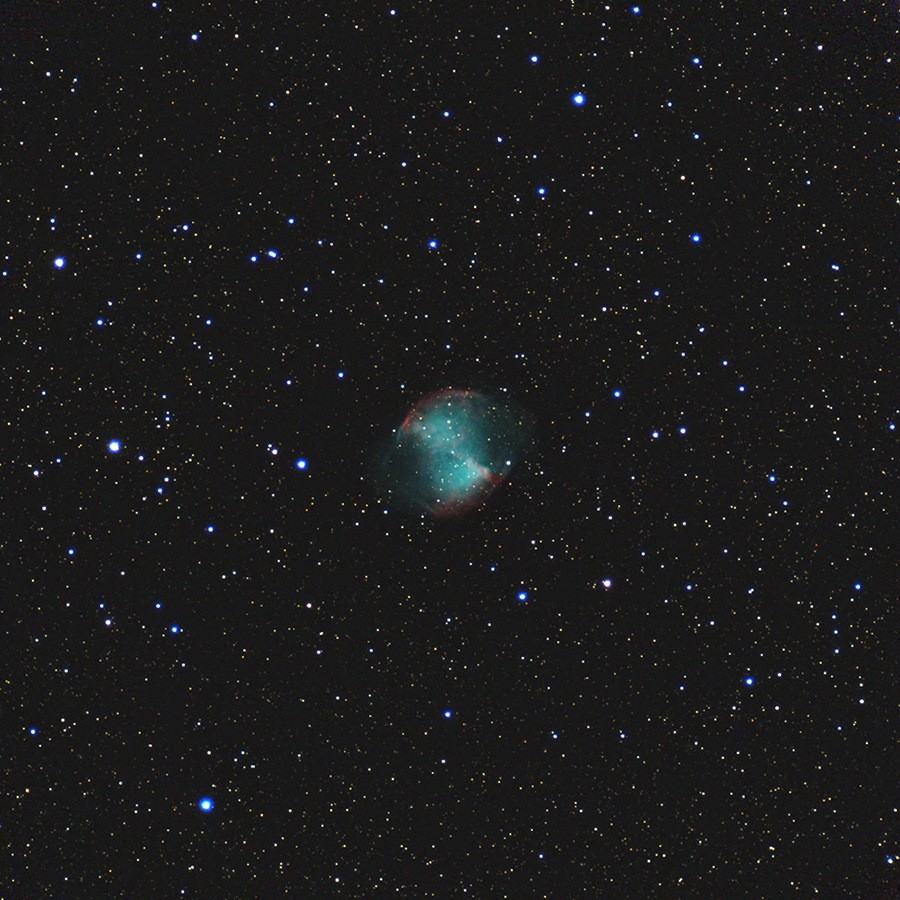

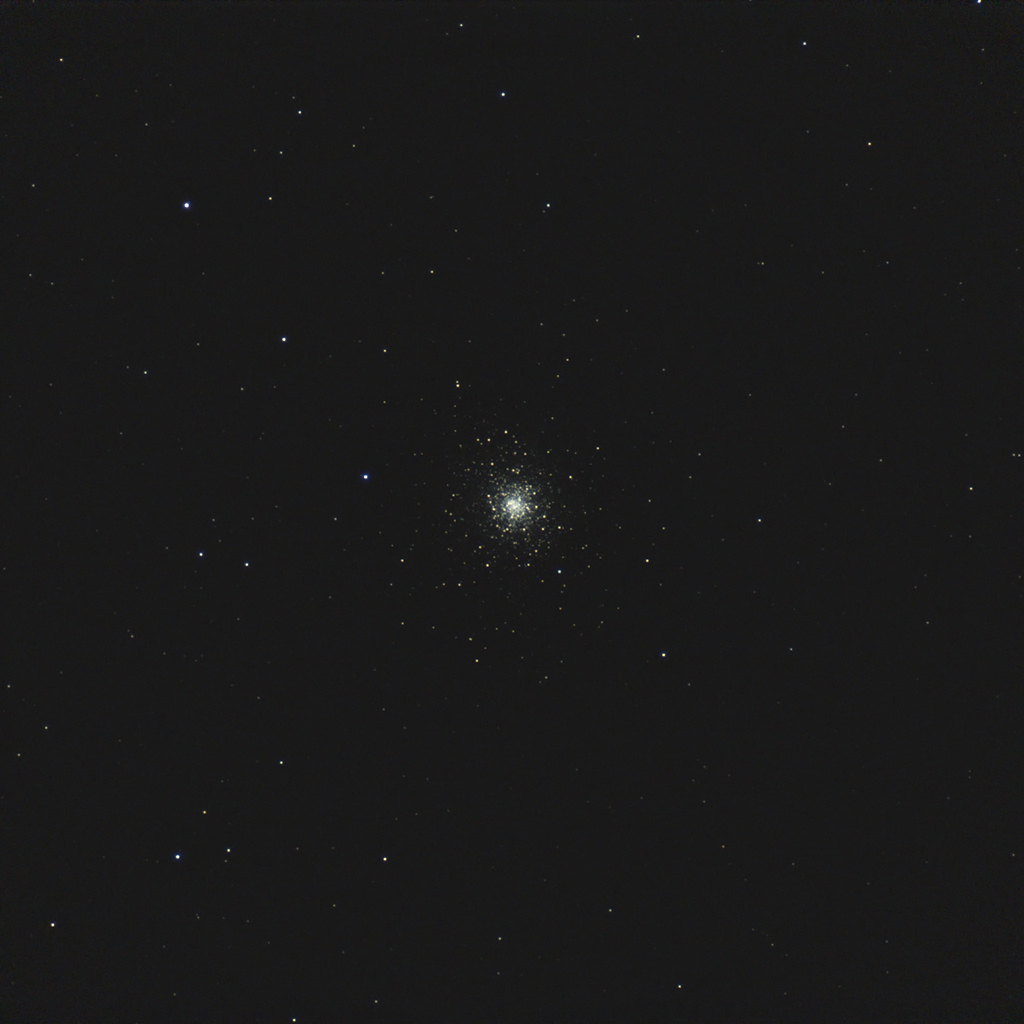
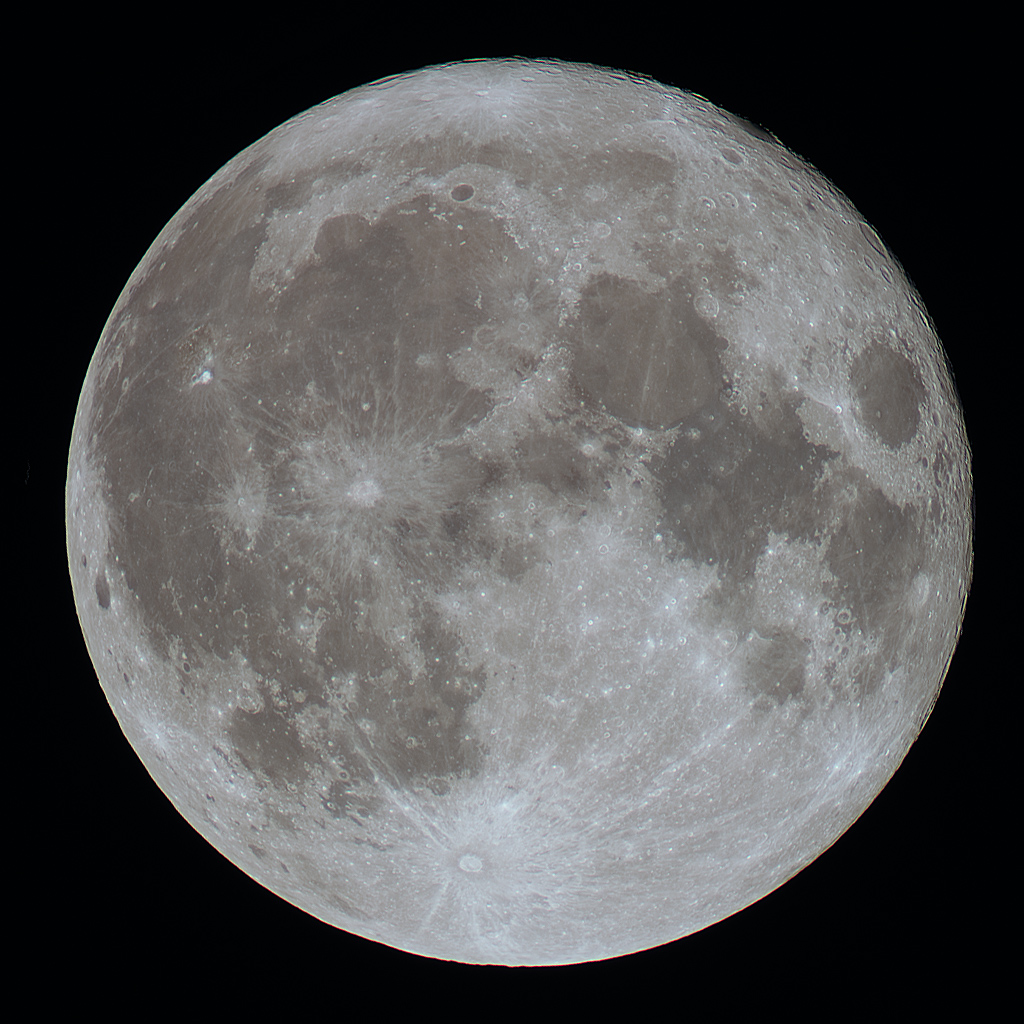
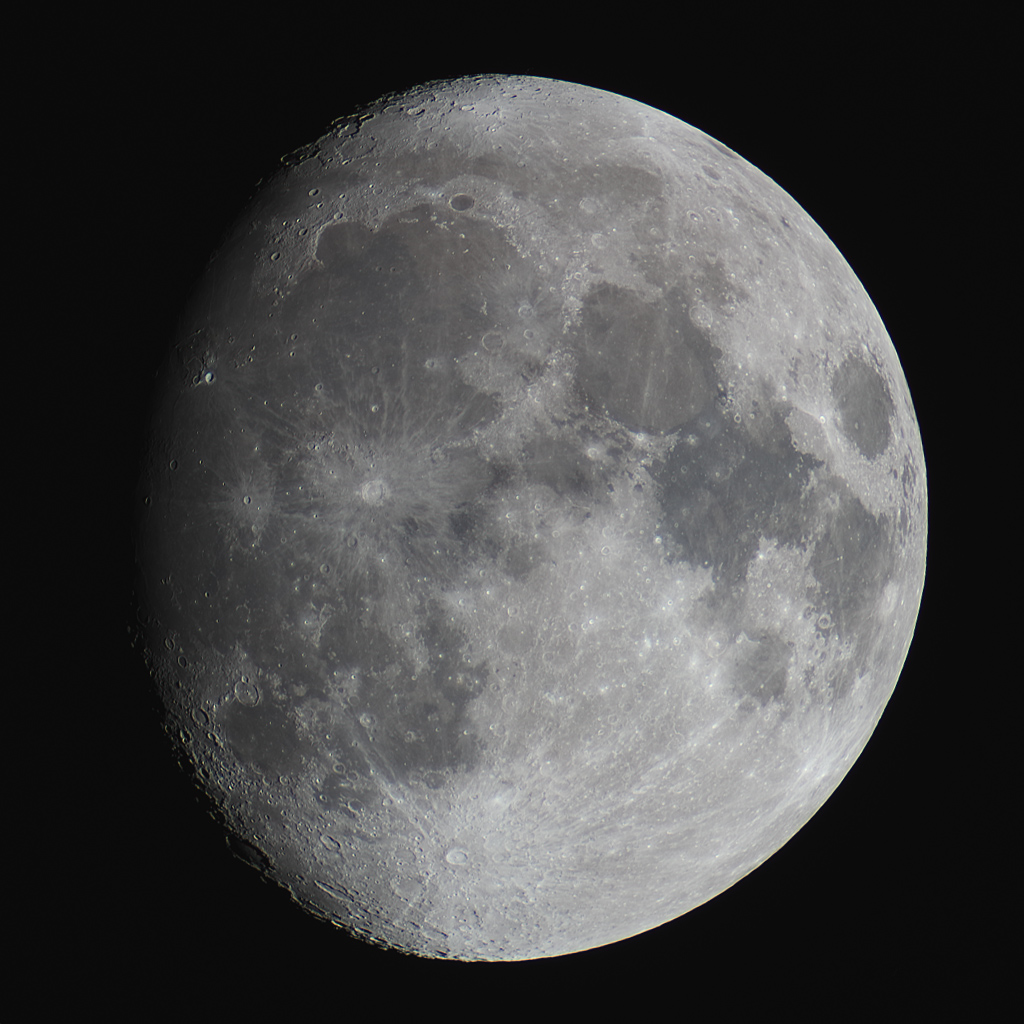
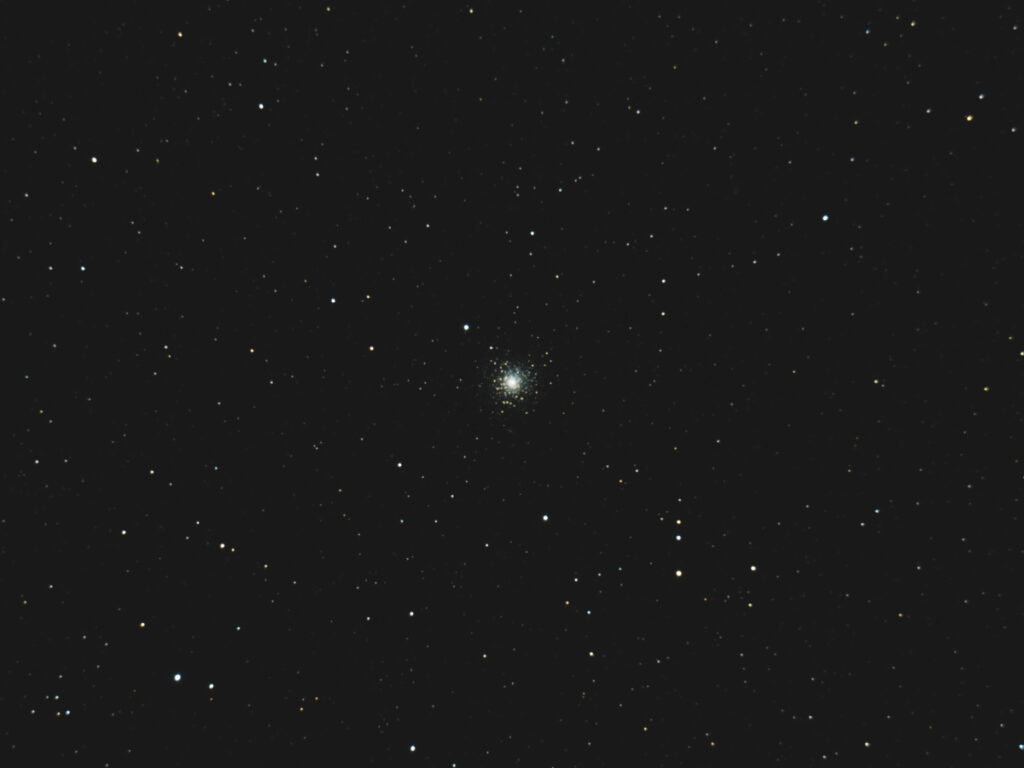
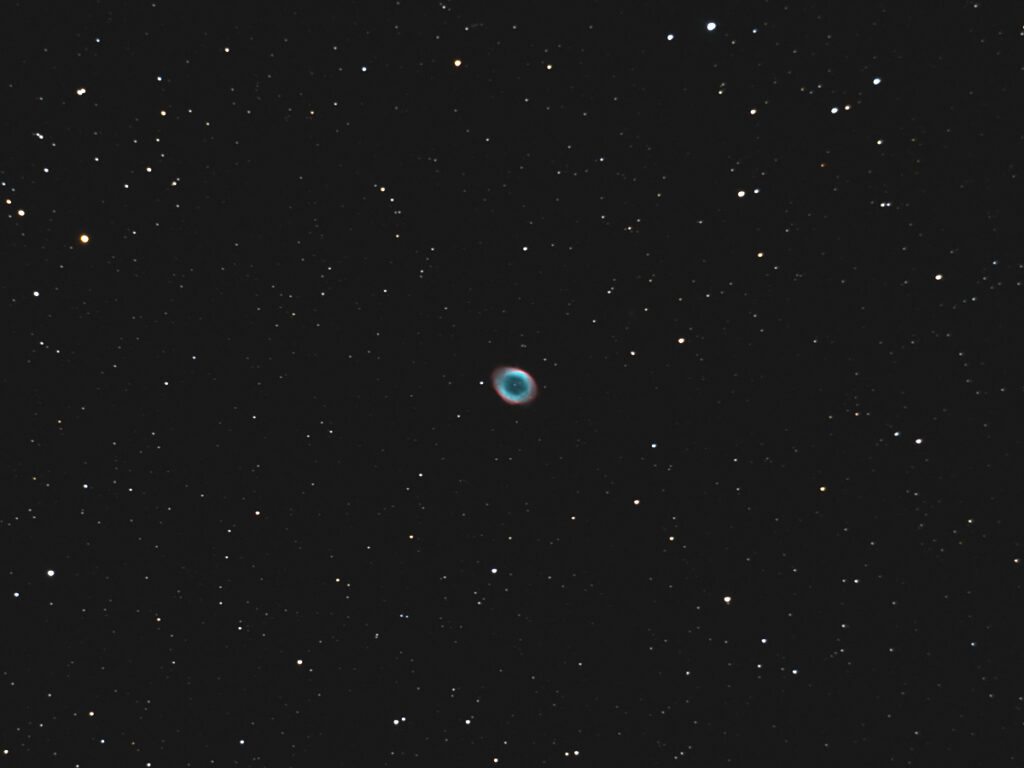
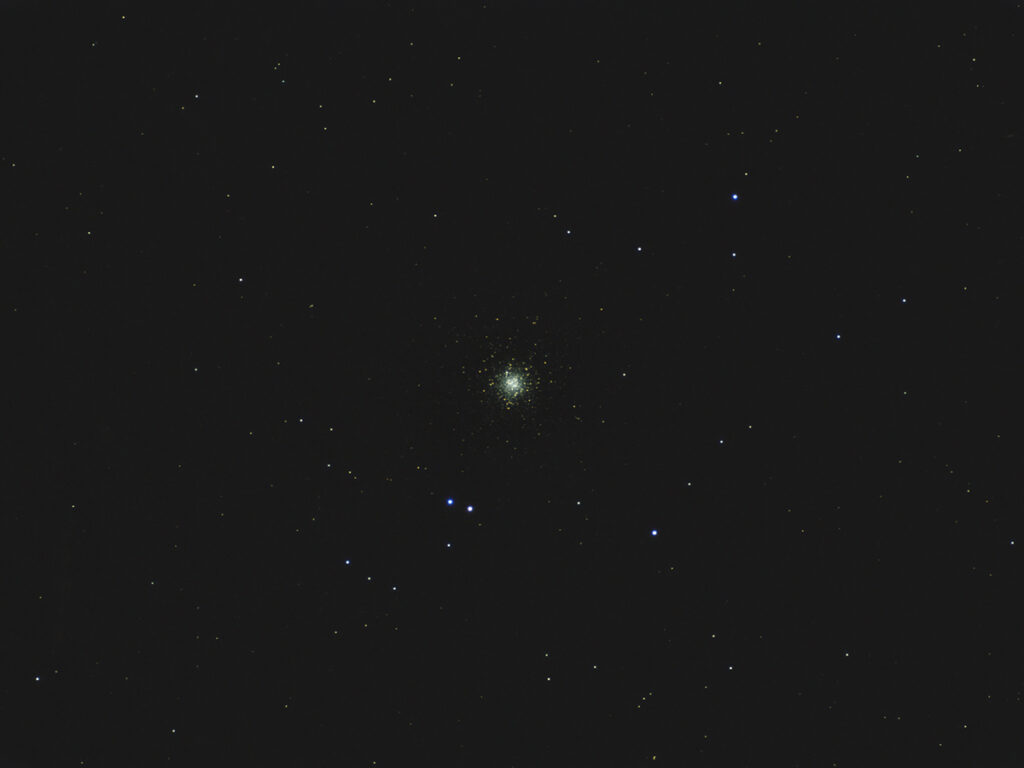
Recent Comments